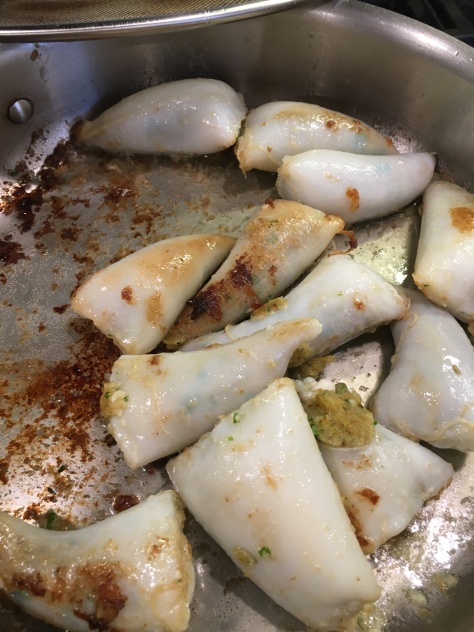
https://takingmulligans.com/louies-cooking-with-love/christmas-eve/christmas-eve-stuffed-calamari/
Last week, as I stared at the final pieces of pie waiting on their respective tins, I contemplated a pie of different sort: a chart that might explain how I ran the Philadelphia Marathon a full 33 minutes faster than I had run Boston, only six months earlier.
Here’s what I came up with and why.
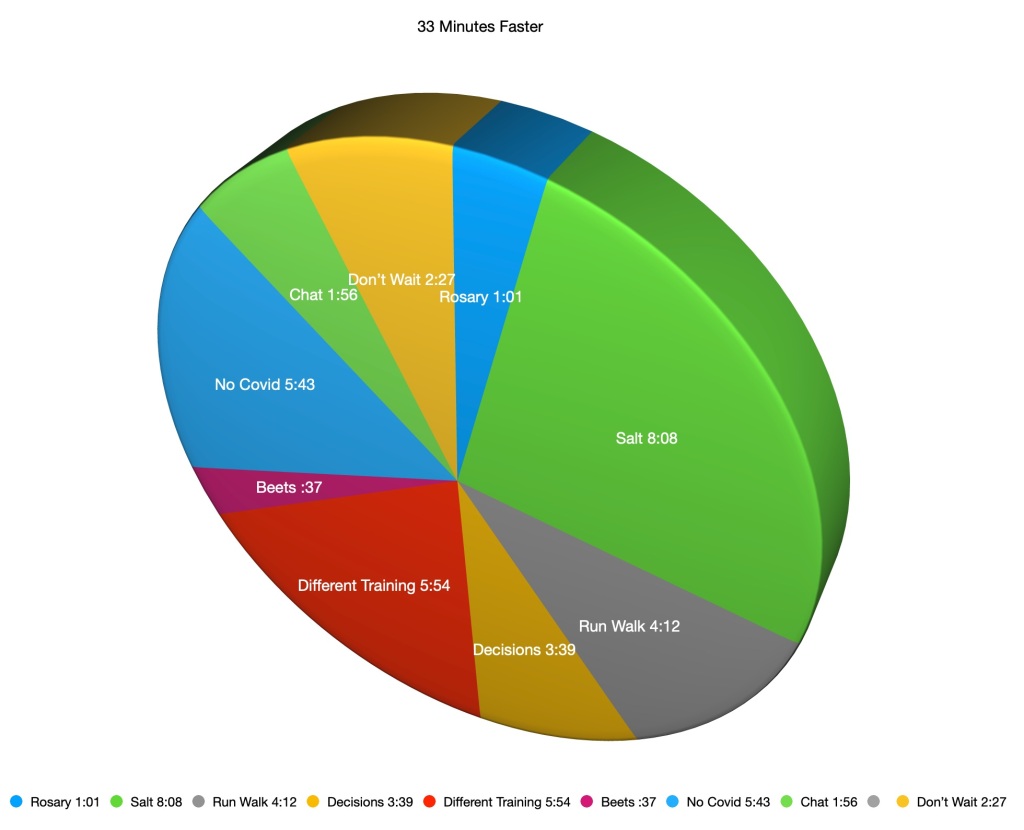
Don’t Wait 20 Years Before Boston in 2022, my previous marathon was New York in 2002. MAAAAYBEEE I waited a little too long.
I think waiting six months, like I did between Boston and Philly, was much better for results–irrespective of the 20 years of straight up aging and depreciation. First of all, there is a certain slow accumulation of stamina that builds up as you train at longer distance. This is not an infinite curve (you don’t keep getting faster forever) but early in the learning curve as you train, you tend to gain multiple capacities at once: grasping the fundamental logistics of how to do this, overall endurance and strength, and the numbing stupidity to keep going long distances when you are losing it. As in life, the retention of knowledge and the strength are somewhat fleeting–six months is good– whereas the stupidity can last a lifetime, so #keepGOING.
Train Differently I’m big on mixing things up. I rarely run the same route twice. But this time, I mixed things up in a more radical way– instead of following a traditional race training plan that specified how many miles to run each day, I shifted to a plan that emphasized total minutes run at a specific pace. The plan, summarized here, was provided by Olympic marathoner Jared Ward, who, coincidentally was present at the finish line to present me my medal, along with Bart Yasso (spellcheck keeps wanting to change his name to Lasso, which also seems appropriate) the man who got me into my first marathon in 1991.
I really had no idea how much I needed that coaching on varying paces to run throughout the weeks. I’ve never been a watch-watcher (when I’m not training I rarely even run with one) so I was a little leery. But by hitting different pace goals (for speed repeats, tempo runs, power repeats, and long runs, see link in caption below for details) I was brought back to the urgency of my track and field days, when time meant everything.
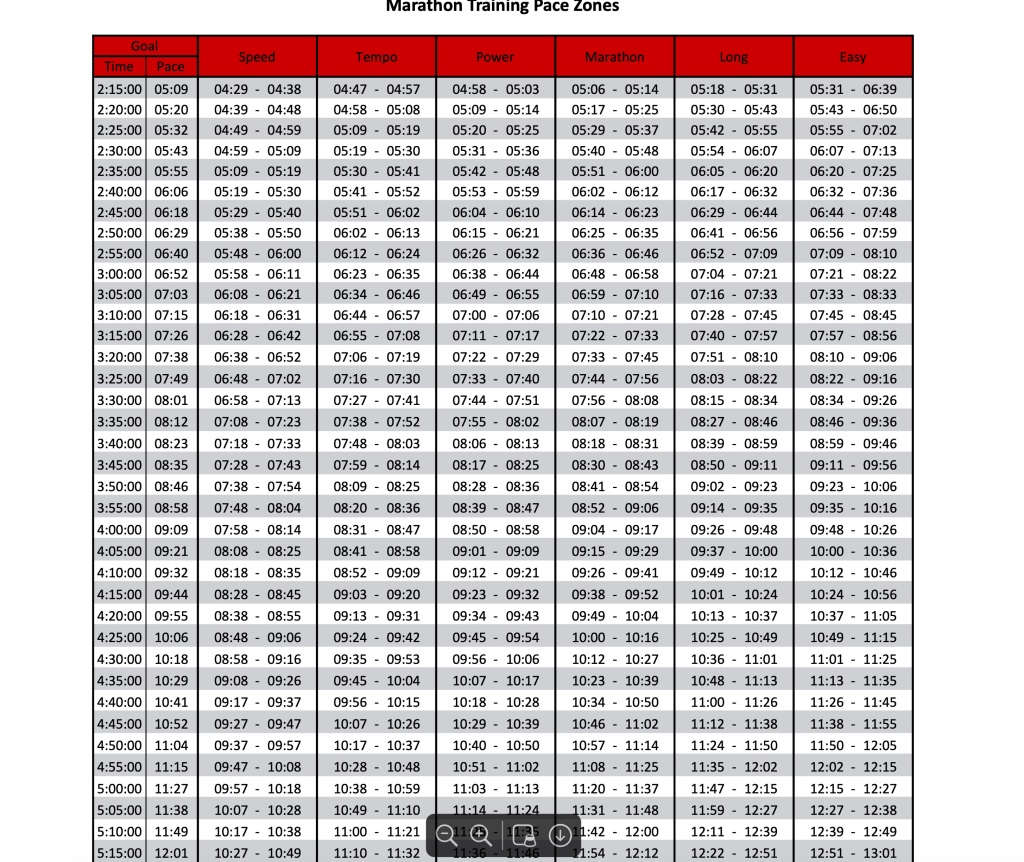
The objective measure of time also allowed me to believe I could go much faster for longer than I realized. In fact, I ended up adopting the training pace regimen for a 4:30 marathon, which was a ridiculous reach, considering my Boston was clocked at 5:13. I would have been thrilled to just break 5 in Philadelphia– and yet, I comfortably crossed the line at 4:40, well beyond my expectations and, age-graded, the fastest marathon of my life.
Eat, Drink, and Be Salty One of my lasting memories of Boston was stumbling into the medical tent, still queasy and unable to get myself home more than 30 minutes after the race. Within 3 minutes after the nurse gave me medicine, I was as good as new. Her miracle cure? A fun-size bag of potato chips. Crunch, crunch, crazy.
A few days before Philly, I finally did the research on why those chips worked so well to restore my balance. Based on the research I could find, I needed to get about 500mg/hour of sodium per hour of exercise. Yet I had consumed only about one-third of that. And once I had become queasy from lack of sodium/electrolytes, I had avoided taking more — the exact opposite of what I needed to be doing.
So I grabbed my Clif gels, Clif Blocks, and SaltStik nutrition labels and calculated how I could take in 2500 mg during the race, since I wasn’t at any particular risk for overdoing it and exacerbating hypertension. I also didn’t carry a water bottle (I may have been sipping too much in Boston, at the expense of my nutrition) and instead, hit almost every water stop and most of the Gatorade tables. Bingo. I never hit the sodium wall and didn’t need the potato chip cure after the race.
Walk, Run, and Be Amby After Boston, I received a message from a long-time friend who was 15 years older than me yet finished 15 minutes ahead of me. His secret? He adopted a run/walk technique that he learned from one of his former roommates.
Normally, I would brush off advice like that from an old-timer– I kinda knew what I was doing. But when the long-time friend is Amby Burfoot, winner of the 1968 Boston Marathon, and his former roommate is best-selling author Jeff Galloway who literally wrote the book on The Run Walk Method , you listen. I started to play with this concept during my training. It took me a while to settle in on an interval that worked for me– but once I did, it left me much fresher at the end of my long runs. This was a game changer on raceday. It makes a huge difference to plan for your walks and take them BEFORE you “need” them, rather than just start walking when you are gassed (and it’s too late to really regain your stamina.) I ended up doing this regularly (if not religiously) during the marathon. I ran the first 6 or so miles walking a few steps at the water stops. Then slipped into my favored pattern: running 10 minutes and walking 30 seconds. I think it helped my time–I ended up well ahead of almost all the runners who passed me while I was walking– and I know it helped my frame of mind. (Find Run Healthy, Run Long, Amby’s training newsletter featuring nutrition, science, and injury prevention HERE)
Look, Cheer, and Be Chatty Another unsettling Boston memory was the feeling from running alongside so many other struggling runners at the back of the pack, yet not commiserating with them for mutual support. At Philly, I tested my theory that perhaps by engaging some, I would help put myself at ease and run happier. I think it worked, too. In addition to frequently pulling up beside a runner going at my pace and starting small talk, I took advantage of the most under appreciated feature of good marathon course design: the switchback/out-and-back.
Some may say it looks ugly on paper, having the course double back on itself. The other marathons I’d run (Boston and NYC) have classic designs that eschew this kind of map. But as a runner, I loved it. From 9 mile on, the mid-pack runners like me were facing faster (and later in the race, slower) runners who were on the other side of the out-and-back. I found myself not only admiring their form and resolve as they ran, but shouting out their names printed on their bibs to encourage them and boost my own spirits. It felt like stepping out of the solitary confinement of my own prolonged misery that is marathoning.
Good Beet and You Can Run To It Maybe you recognize the catchphrase of Rate-A-Record on American Bandstand, which was filmed not far from the Philadelphia marathon course at Studio B, 46th and Market, until 1964.
But this beat is run to the root vegetable. I had come across some research that indicated beet juice could be an elixir to help endurance athletes, so I loaded up on eating beets and drinking beet juice in the days leading up to the race.
A Series of Fortunate Decisions So many little details go into raceday, it’s a bit mind-boggling for an obsessive planner like me. I felt like I didn’t have much margin for error if I wanted to run fast and happy. I think having run another marathon six months earlier gave me enough relevant experience to get alot more things right this time around. I also incorporated the Cinquino Progression, what some call the most effective tactics for optimal layering in running. I created this winter protocol from decades of cold weather running my native habitat between Buffalo’s Lake Erie and Rochester’s Lake Ontario.
A lot of other little things built up. Moves like the late addition of a running vest that stored my expanded gel collection while protecting my nipples from the biting wind, picking the right gloves, remembering the Buff balaclava that my daughter had given me last winter, running into a friend who reminded me about the compression socks I had worn in Boston and which would serve me well on this cold day in Philly, registering with the American Association for Cancer Research’s Runners for Research to give me motivation as well as a place to gather before and after the race, reliable and enthusiastic race support, having someone you love at a designated location on the course to look forward to seeing, and perhaps most of all (? see below) the trip to the thrift store for throwaway clothes to wear (and pray with) at the start.
Don’t Get Covid Two weeks before my Boston Marathon in April, after a (mostly) lovely trip to Florida, I tested positive for Covid-19.
I had all my shots and booster, so the effects were not life-threatening. But having a respiratory virus before I was about to run the longest distance I’d run in 20 years could not have helped.
I was even very faintly testing positive with the at-home swab the day before the race. This time around, I could have a normal taper and not have the added worry about a sore throat and my lung capacity being compromised.
Eat (PB&J), Pray, Run It’s 7:10 am Sunday, in view of the Art Museum, iconic for reasons not having to do with its collection.
In 29 degree semi-darkness, I find myself waiting in the Orange corral before the race, with other nervously shaking (or shivering?) runners hoping to maybe break the 5-hour mark.
Just like lying awake in bed after a restless night waiting for my alarm to go off, I find these final minutes waiting for the starting gun to go off are starting to be filled with doubt, fear, anxiety, and a general what-the-fuckery that often cloud my mind and keep me from savoring and appreciating the incredible opportunities ahead of me.
Do I even belong here? Did I prepare enough? Are these shorts going to chafe? I should have eaten more of that PB&J sandwich. I have to pee. I’m going to screw up and go out too fast again. Tighten those shoelaces for the 7th time. They still seem loose. Everyone is talking about the wind on Kelly Drive. How bad is it going to be at the end? Am I really going to be able to keep it together today?
With all these emotions rage-swirling my mind, I hear a horn and see the corral in front of my group go off into the morning sun. We are beckoned to move up into position at to be next in line. I’ll be fine. Totally fine. Right?
Three minutes to go. I have already removed and tossed aside the oversized sweatpants and cotton hoodie that I had picked up at the thrift store the day before. I now slip out of the fleece overcoat that is my final layer of protection, and before I toss it, I make sure I didn’t put anything in the pockets. But wait. What’s this?
Rosary beads??! Made in Italy!?!
While I didn’t need to carry any extra weight for 26.2 miles, but there is no way I was going to throw away found rosary beads one minute to go before the race. I may be missing mass this morning (again), but in an instant as I clutch and relive the familiar feeling as the beads fall through my fingers, I instantly feel the full embrace of the countless Sunday mornings and family time spent in and around church and Catholic school.
And a little bit of my parents stays there with me, reaching down to me in the city where my father’s immigrant parents first settled after their passage from the old country, assuring me it would be ok.
I squeeze them once more, extracting every morsel of whatever divine powers they may bring me today, then slip them into the right front pocket of my running tights.
I no longer worry about the wind on Kelly Drive. I know it will be at my back.
My Garmin watch tells me I landed more than 50,000 steps on Sunday, November 20, 2022. That’s how my wearable tech will remember the day into digital eternity.
Here’s how I will:
Sorry to blow our elaborate cover, but Philly sports fans have been playing the national media for years. I know because I am one, of the Sixers and Phillies, at least. We laugh behind our backs at the idiotic stereotypes of us being more abusive and rude than other fan bases.

We cheer any athlete who gives maximum effort — as was on display Sunday, when 14,000 runners were cheered relentlessly by perfect strangers who lined nearly the entire route. Many of us were plodding along at a pace that was not particularly cheerworthy, yet I swear I heard people yelling their support just as loudly as I have at Citizens Bank Park. And this after standing in below-freezing temperatures FOR HOURS.
And the signs! They were the best. In addition to the old favorites like “Run If You Think I’m Hot,” an assortment of fart/pooping your pants gags, “Tap Here for Power,” “If it were easy, I’d be doing it,” “All This for a Free Banana?,” and “Worst Parade Ever,” a few memorable ones stood out:
You are running better than Twitter
Hal Higdon Lied (if you know, you know)
YOU = AWESOME (on a board about the size of a lunchbox, held diligently by a tiny little girl, maybe 3 years old)
And my personal (least) favorite:
Because of Inflation, You Have to Run 28.6
I remain baffled as to why so many people were there, cheering so loudly, remaining for so long, while knowing so few people (if any) actually running the race.
I am left to make only one controversial explanation: Philly fans are the best. Fight me.
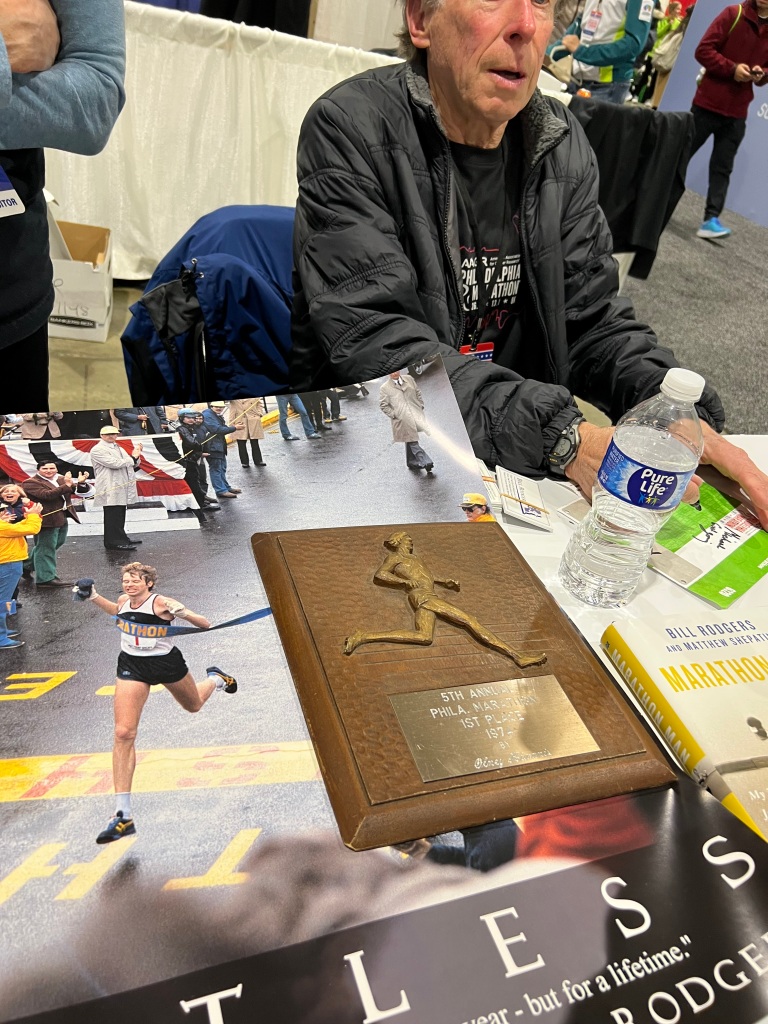
I’m either lucky, #blessed, or have a little Forrest Gump in me, because I found myself meeting and talking with both Bill Rodgers and Jared Ward. Rodgers takes his place on the Mount Rushmore of American marathoners with four Boston wins and four NYC Marathon wins.
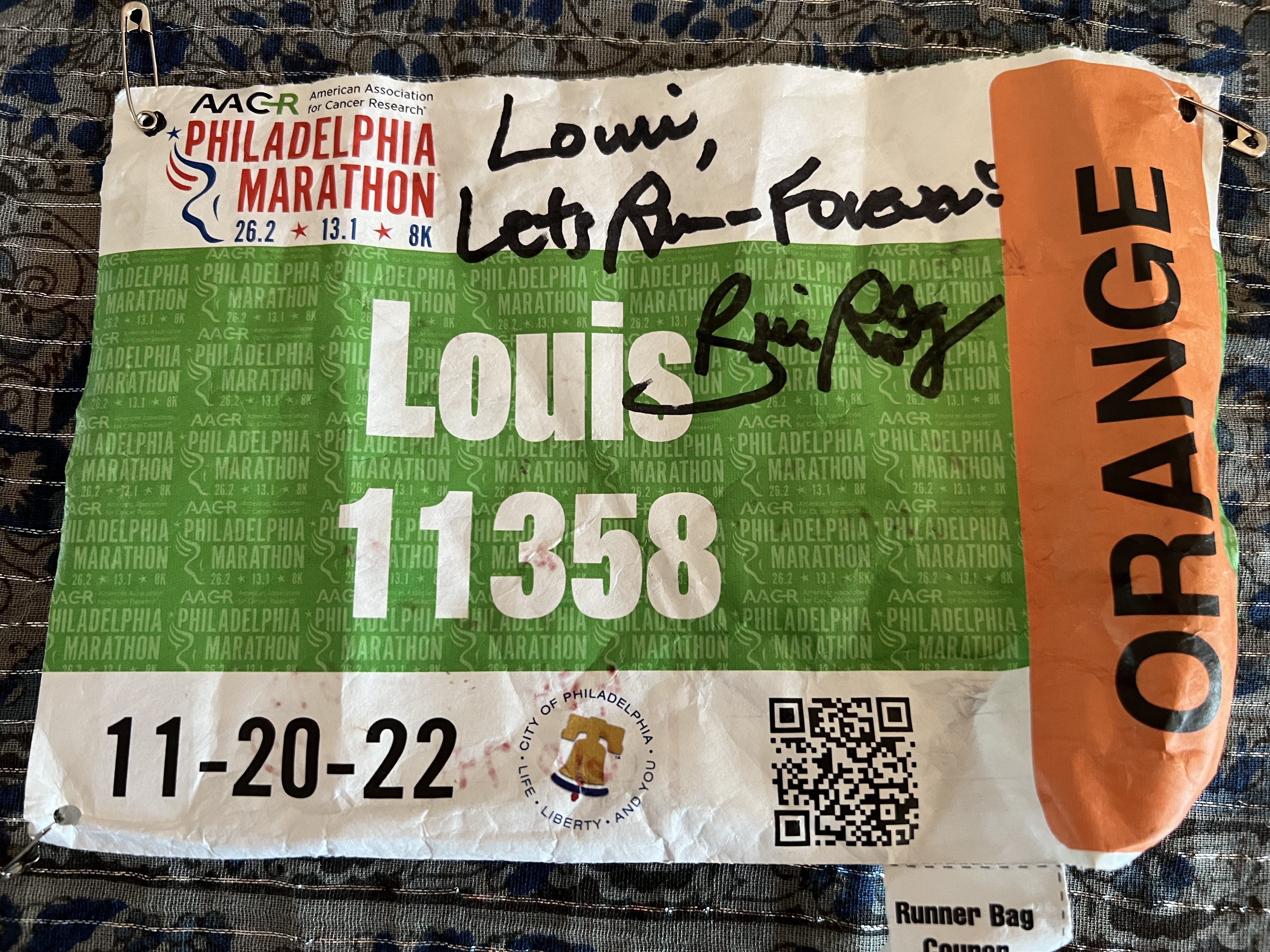
Ward, a 2020 Olympic marathoner, designed the training plan I used to train with over the past 4 months and was at the finish line to present my medal.
Actually, now that I think about it, there’s a fourth possibility for my good fortune: In 1989, I happened to go to work at the company that published Runners World. There, among the running dignitaries like 1968 Boston Marathon winner Amby Burfoot, I met Bart Yasso, an editor and itinerant golfer, who befriended me and got me into the 1991 New York Marathon, my first. Bart introduced me to Rodgers and Ward this weekend as he continues to live the dream as The Mayor of Running and avoid ever working a day in his life.
A personal Philadelphia sports thrill for me was being able to flash Allen Iverson’s signature “Let Me Hear You” hand to the ear gesture to the crowd. I’ve done it at other races when I really want to egg them on to cheer for us as we go by, but this was especially meaningful, since I had witnessed AI do it so many times on the court in South Philly.

The people I DID NOT want to brush upon were my usual nemeses — the novelty runners. As a spectator, they are amusing. As a fellow runner, they not only annoy the goo out of me, they hold the unique danger of being in your general proximity when you come upon the race photographer. That could mean you are forever enshrined as the guy just behind the Big Bird, or running side-by-side with a Hot Dog.
This Sunday, my villain was a superhero. All I heard for a couple miles as we came upon waves of spectators was “HEY BATMAN!” and “Na-na-na-na-na-na-na-nah – Na-na-na-na-na-na-na-nah BAT. MAAAAN!” (And then I had to sit here and sing the theme song and count out the “na na na’s” for this post. Ugh.) Happy to say that I eventually broke free of The Batman on Walnut St, passed the Teletubby at about mile 10, scoffed at the guy juggling as he went by in the slow lane of a switchback, and ran down and blew right past The Guy In the Full Suit and Tie with about 2 miles to go in the race. Fingers crossed that I don’t appear in any photos with them.
One of the mental pictures I’ll take with me was on Kelly Drive on the way in to the finish. After traipsing out to Manayunk for several miles into the wind and uphill, the final 4.5 miles come back the same way, but this time slightly downhill and with the crosswind mostly at your back. By then, I was pretty sure I was going to make it without the kind of crash I experienced on the hills of Boston at about the same point in the race.
And, perhaps unlike the hundreds and hundreds of my fellow runners who now looked like they had gone out too fast earlier in the race, I was feeling as strong as I did all day and started passing them bunch-by-bunch like grapes at a vineyard.
At one point, the road kind of opened up, such that there wasn’t anyone in front of me in my immediate vicinity, and there the wind starting swirling low to ground. The dried leaves that lined the route along the Schuylkill River were now in full dance. Nature’s crunchy litter being whipped around and foaming sweetly like a wintry cappuccino, a spiral that promised to draw me in and transport me up, up, and away into my own Super powers. I ran through the whirlpool like a rock star coming onto the stage through the fog machine, dead set on finishing the race at my fastest pace of the day.
When I looked back up again from the leaf fog, I was surprised to see the 4:45 pacing group that I had tried to keep up with for half the race, but whom had disappeared out of view as I slowed down my pace as the miles had mounted. But here they were. As I finally caught them, I was content to sit in behind them, knowing I could make it in 4:45 if I could keep up with them the rest of the way, only a few miles to go.
That contentment lasted about 12 seconds, as I realized they were going too slowly for me now. I had graduated to a faster pace and was past them before I could even decide if I should slow down. Instead, I chose to ignore my watch, not worry about hitting any specific time, and just let it go. Enjoy going full speed and at full strength, without feeling the need to force myself into utter exhaustion.

To trust my training. To trust my body. To trust divine timing. To run free. To finish strong. And let the numbers, like those swirling leaves which will transform into the spring’s new soil, fall where they may.
When I heard Bart shout my name after I had punched across the finish line later, I didn’t even realize it but I had cut 33 mins off my Boston Marathon time from 6 months earlier. And, according to the age-graded charts that compare a runner’s time to where they are relative to others of their age cohort, had run the fastest marathon of my life.
Yes, it was hard (even more so than I imagined it would be.)
No, I’m not still sore (honestly, my recovery was much less painful than I expected.)
Yes, absolutely Yes. I am glad I trained for and ran the Boston Marathon on behalf of Boston Children’s Hospital.
Will I do it again? TBD.
Here’s what it was like the first time around…
The race was not without moments of doubt and despair, mind you. Yet those doubts passed quickly, about as fast as any thoughts I had of running a PR that would further establish me as some kind of reverse prodigy, kind of like I did with my Mulligan Mile 10 years previous.
What the day left me with most of all was an appreciation of the personal transformation that takes place when a person sets an ambitious goal and pursues a great endeavor.
The training and the race not only helped transform me physically, but opened doors to relationships with new friends, reconnected me with old friends, and reinvigorated a way of positive living that I sometimes lose sight of– the way of the mulligan.

Living the way of the mulligan is more than just taking a second chance at something, like you would get on a golf course when your playing partners allow you to redo a shot that has gone awry.
While those do-overs are moments of grace that are critical to embrace and take every advantage of, they only appear from time-to-time in light of some kind of perceived failure.
But living the way of the mulligan is something we are called to every day, during good times and bad. Today, now in this and every moment, we can take another chance at making our lives vibrant and alive and worthy of our humanity.
Now we begin.
Every breath is just one breath that’s never been breathed before and won’t be again. Every step is one step that we can appreciate in mindfulness.
And what is a marathon more than breaths and steps– and potato chips and… . But I’m getting ahead of myself.
It’s easy to feel like an imposter when you run the Boston Marathon on a fundraising entry, instead of qualifying based on your fastest marathon time of the past year.
So I was heartened by the enthusiasm of my fellow team members at Boston Children’s Hospital, the sincerity of the hospital staff and families who shared their stories, and the palpable gratitude of so many spectators who cheered us on. With apologies to the Seinfeld bit, it was proud day for my blue and orange checked laundry. That singularly ugly-on-the-outside-beautiful-on-the-inside jersey was cheered on loudly in every neighborhood of the race, and made me feel very much at home on the course.

The weather was perfect, a little on the warm side by the time I was on the most difficult part of the course. So I was glad that I had gotten in a little heat training during a quick trip to Florida right before the race. But guess what else I got in Florida? Yup. COVID-19. I know, imagine that, in FLORIDA, of all places?
So after more than 9 months of training and more than two years of diligent avoidance of the virus, Florida finally got me.
Thanks to the Moderna vaccine and booster, my symptoms were mild and mostly cleared within the first week after they started. However, I did still have a little lingering heaviness in my throat and chest, another week later. I can’t say how it affected my performance on the course. I do know that testing positive cost me a week of training and sowed more seeds of doubt that sprouted when things started to get really difficult in the run. This was not the kind of “positive psychology” I have studied and written about.
I was told by a grizzled old veteran of the 1970’s and 80’s running boom that marathons are supposed to be hard. In as many words, he basically told me to suck it up and quit my bellyaching about how I wilted in the later stages of the race.
Which is exactly what I had been trying to do during the marathon with one major issue: my bellyache. I had expected to be tired, of course. I expected my legs to start to wear down — which they did on the famous Newton Hills leading up to Heartbreak Hill. I had felt that feeling before and had always been able to pause, walk it off, take a little something to eat, put all the pieces back together again and start running again.
But what caught me a little off guard this time was that bellyache. Whenever I would start up running again on the hills, I would get the feeling like I was on the brink of throwing up– something I saw several fellow runners do alongside me.
I didn’t exactly hit the legendary “wall” that mythically separates runners from the final 5 or 6 miles of the marathon. It was more like climbing over a series of small boulders not long after the halfway point.
It reminded me of the couple times when I’ve been seasick. Queasy, unsteady, blech. What I also remembered about being seasick was once I started throwing up, there was no stopping it. So my internal coach made it clear to me: must. not. vomit.
Just the thought of that took its toll on my pace– my 9:50/mi first 5K went to over 15 mins/mile by the final 5K leading up to the last mile. Which basically means I was walking half the time. That was no really what I had in mind, but each step did take me one step closer to the finish.
Looking back, I thought of a few technical corrections that might have alleviated the discomfort. Ultimately, I think I needed a few more calories and lot more sodium. That became clear when I paused to lay down in the medical tent after the race, knowing I was too queasy to get in the car and drive the hour back to where I was staying.
The nurse prescribed the kind of medicine that we wish could cure all our physical ailments: potato chips. After eating half a small bag of them, one tiny bite at a time, I popped up on my feet like Popeye after a can of spinach. And was able to ride home without incident and enjoy a big Italian dinner that evening.

If there was a drone following me on the run it would have captured some damning footage of me. The video would show me running happily in the sections of the race where I hugged my sister Liz, my daughter Eve, and other friends who had come to see me pass by. And there could be an inspiring montage where I took time to exhort the crowds and blow kisses (Thank you, Women of the Wellsley Scream Tunnel and cheering fans on Boylston St.)
It would also show stopping to walk almost immediately after I passed through all the attention. The people were carrying me through.

So I don’t know why it took me almost a week to realize an overlooked remedy (beyond the salt tablets that I was carrying but failed to ingest) that maybe, just maybe, could have helped me keep up my running pace as I was struggling.
It took days filled with an outpouring of calls and messages, congratulations, affection, and good wishes (more than 400 likes on FB. Probably my most-viewed post ever) from friends and family.
It took a week of thinking how I couldn’t have gotten to the starting line of that race without so many countless people, known and unknown who were part of my team of support.
It took a week of looking over my list of more than 150 donors who contributed to my fundraising for the hospital’s research and programs. [NOTE: My fundraising page can be found here and will be open until May 9, 2022. Please pass this along to anyone you know who might be interested in supporting their great work!]
It took a week of posts, stories and photos streamed from my fellow fundraising runners at Boston Children’s, who I had spent the run either passing, or more often, being passed by. None of whom I personally knew beforehand, but who were running the race in the same laundry as me, so easily identifiable.
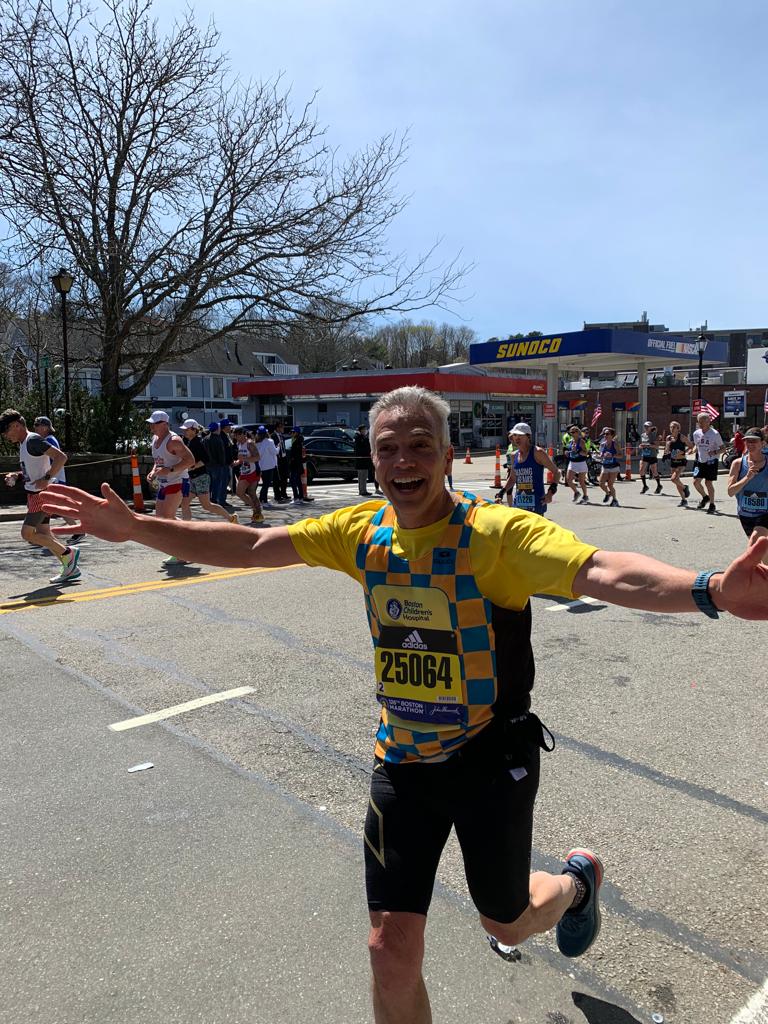
The answer may have been right there, running alongside me, hiding in plain sight in those garish checked singlets. It finally struck me.
What if I had just asked to run along with one of them and started to talk with them about, well, anything? Would that human interaction, that social fuel been enough to get me a little more straightened out during the run? And that may have been all it took to make adjustments to my nutrition and pacing to the finish? And even if my time wasn’t improved (which in the end is pretty darn meaningless)f, could my run have been more enjoyable? I tend to think yes, yes, and yes.
So that became perhaps the major life lesson of the day– we have to do certain things on our own. We have to do the hard work, the training when no one is looking. We need the resolve to keep rising up over the adversity that inevitably will arrive, since life will be hard at times. But in our determination for self-determination, perhaps it’s best if we don’t overlook that others are there to help also. And by reaching out, you may be helping them too. We all have our Heartbreak Hills to climb.
And all along and with every breath, step, and potato chip, we could have all been finding our own Way of the Mulligan, appreciating whatever we were experiencing together and individually.
Now we begin.
On weekdays when I run it’s often on a local campus, where I meet up with a friend who works there and we just kind of meander over the hilly streets and through surrounding neighborhoods. Without any pre-set course in mind, we just kind of go where the run takes us that day. No two runs are ever identical.
On Sunday mornings, there’s a group I meet in a park where we run the exact same route. Every single time. The same path, the same direction, the same turn at every intersection. No two runs are ever identical.
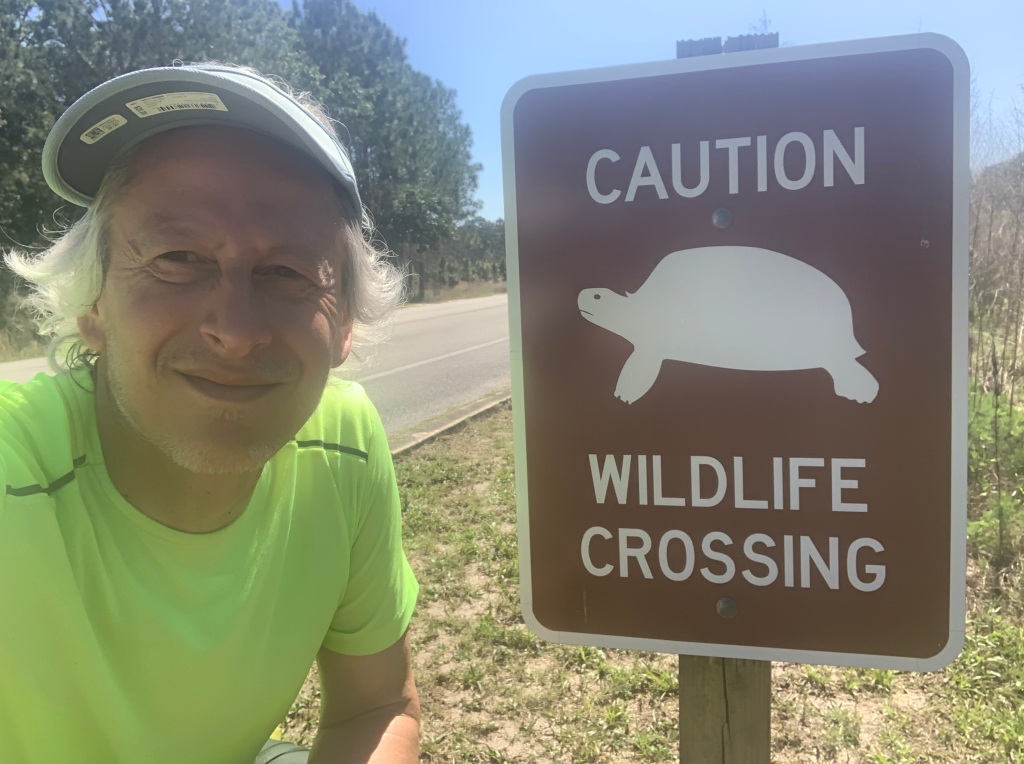
No two runs are ever identical. Period.
No matter where you are or who you are with. There is something unique on every path that’s never been there before. What’s more, you’ve changed too since the last time you ran it. In fact, you are changing the whole time you are running any route.
You know what else is true?
No two runs are every truly different, either.
There is always something familiar and known when we enter into our stride. Not the same. Not different.
The trick is paying attention to what appears uniquely that day, as well as acknowledging what’s held fast. The familiar shows up uniquely, and what’s new rings the bell of the familiar.
In a few days I will be running a new course. In an unfamiliar city. Over a distance I haven’t run in 20 years. With more than 30,000 I’ve never run with before. You see, I’m entered in the 126th running of the Boston Marathon and every aspect of that day will be new– except for what is very familiar.
Let me explain.
I asked some veterans of the race about their “mental map” of the course and I discovered how my fellow runners approach specific segments of the race, how they get through the challenge while savoring the joys of the course, and how they experience one of the greatest achievements of their athletic lives.
While I’ve never actually lived through any of the exact details of what they’ve told me, I found myself identifying their experiences with places I’ve run, emotions I’ve felt, insights and visions and connections I share regularly and have enjoyed throughout my many years of running.
I put together some of their thoughts– and mine– to illustrate this paradox. Read on to see what’s unique to the Boston course– and yet what may be familiar to your everyday run next time out.
So even if you never run Boston, you can join in.
Come run with us.

TAKE THE ROAD LESS TRAVELLED
“I love the start seeing a sea of runners ahead of you going down the descending grade as your adrenaline and emotions are getting the best of you. That’s why you go out slow, easier said than done.”
“Of course the start line and that first mile are a rush – seven thousand people in your wave all shuffling toward the start line, subtly speeding up their walk until you cross the timing mat and everyone starts to really run, still pretty tightly packed. Then down you go… the first stretch is a downhill out of Hopkinton – all you see ahead is a sea of bobbing heads and shoulders, undulating down the hill and… we’re on our way!”
The beginning of every run is what I consider a fork in the road of our lives. Before we begin, we are on a certain path– our civilian life, if you will. Responsibilities, constraints, details. But when we take that first hop, feel our knee bend, then extend and swing the other along like it, we take the first step along a new path. We have veered off into different territory– along with everyone who’s ever run before us and with us. The people who inspired us, taught us, protected us. Made us laugh. Made us think. Given us a reason to run. It is the road less travelled, but we are not alone. And that makes all the difference.
NOBLE SILENCE
“A mile or so after the start, you hit a stretch of quiet where there are very few homes and even fewer people lining the roads. It’s the brief calm after the boisterous clamour of the start. All you hear are runners’ footfalls, breaths both heavy and light, an occasional cough or throat clearing.”
“I imagine it’s the time when most of us consider the enormity of what’s ahead, take in our overall fitness, assess our current pace and prepare for the grueling miles ahead of us. It’s really what most marathons are: a lot of quiet miles. But Boston has precious few stretches like that and the closer one gets to the end, the louder and more explosive the impact of the crowds become.”
“the course gets quiet, no cheers as its not a spot accessible to spectators . It’s then I think of why I am running, who I am running for as I listen to nothing but feet hitting the ground.”
Buddhist teachers and Catholic mystics, among many other spiritual traditions, emphasize the importance of silence as a way to center ourselves in the awareness of the present. No matter how noisy a race or run can be, if we seek we will find a quiet moment within. Here we can listen to our breathing, feel the miracle of running on this earth, and be present to the moment we are experiencing. In this silence, we can find our why– the pieces of our life that running makes better.
LONG LIVE ROCK
“The biker bar in Ashland. Heavy drinking and hard rock.”
“Ashland: in the first mile or so, runners scamper into the woods to pee.”
“I also love the dogs in Ashland; and now learned one has terminal cancer.”
Running can seem like it’s a spiritual practice–but let’s not get carried away. It’s also just fun. Rock ‘n Roll, dogs, the the childlike peculiarities of our bodies. It’s fun to be human and experience parts of our run that are just that– human and real. It’s also terminal. It will end. Don’t take it for granted. Eventually, one of your runs will be your last. And you probably won’t know until it’s over. So find the moments in each run to celebrate your freedom, liberty, and the privilege you have to indulge in it.
LOOK IN THE MIRROR
“In Framingham, there is a glass store where you can check out yourself in the window’s refection.”
Find a place on your run to look at yourself– in a physical reflection or a personal one. There’s no better time to get new perspective on who we are becoming, physically and otherwise.
NO SHADE / NO SHELTER
“In Framingham, by the railroad tracks- the most desolate section of the course. Also, the section of the course with the least shade.”
There are going to be times where you are exposed and vulnerable. Be aware as you go through these stretches on your run, remember later how you got through the worry, the discomfort. Summon that energy of success and sense of achievement when you face adversity in your life.
THE HAIL MARY
“Natick: very nice town center where you can experience an adrenaline rush from the crowds.”
I’m sure Natick is a lovely town. However, I only know of it for one thing…Natick is the hometown of Doug Flutie, a Boston sports legend known for his famous Hail Mary pass in 1984 to beat Miami. Talk about an adrenaline rush! Take a minute to appreciate all the unlikely, wonderful surprises in your life. Maybe even say a prayer.
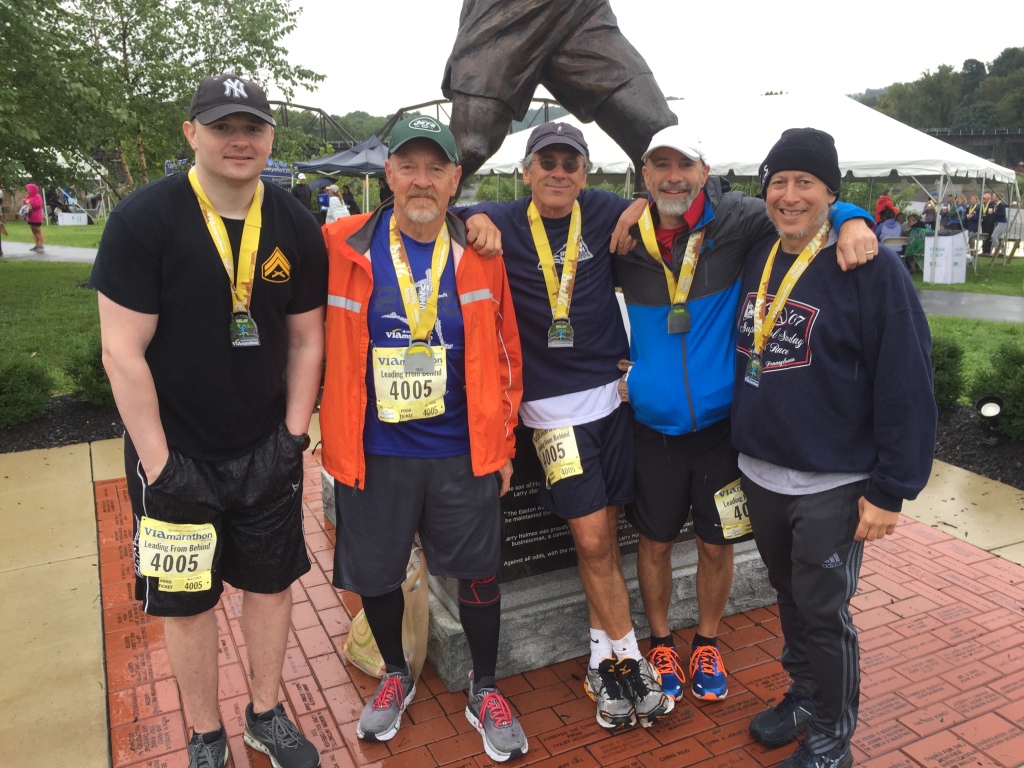
THE QUIRKY LANDMARK
‘”At about 7.75ish miles in. There’s a Wendy’s at the top of this little hill and my coach always called it Heartburn Hill”
Look for those hidden little markers, even in plain sight, that make you smile and remind you of important people in your life. Or make you laugh. For example, I ran into an old friend of mine unexpectedly on an otherwise unremarkable corner that I rarely run by. Now, even months later, when I come at that corner from that direction, I think of him and smile remembering our friendship.
RECEIVE
“Wellesley scream tunnel by the college”
“The scream tunnel of course. Always my fastest mile.”
“passing the Boston Children’s Hospital cheer section. Seeing the kids and their families and hearing them cheer for you was so emotional for me…”
We are often called on to give. Some of us get quite good at that and forget what it’s like to be able to receive. To receive other’s gifts to us graciously, to feel heartfelt appreciation, and to harness the goodwill from the exchange to bring us to better places in our lives. On your run, find something to receive– whether it’s a wave and a smile from someone along the way, or the shade of a tree, the warmth of the sun, the cool of a breeze or chirp of a bird. Much is being offered to you. Don’t squander it.
MIDLIFE REMINDERS
“the Mile 13.1 mark in Wellesley Center – big crowds cheering, and psychologically a big spot: halfway done, now it’ll be less distance to the finish than the start…”
“… the two enthusiastic young lady runners I once overheard on the first of the Newton hills saying ‘Is this heartbreak? It’s not too bad at all’ [actually a couple miles away from the famous hills].”
No matter which side of the hill you believe you are on in your life, the midpoint of your run can be a reminder that our lives, like this run, won’t last forever. And we never know how much time is left– or what it will be like for us. There will be a day when you really wish you were on this run, feeling this fatigue, being in your body and strong enough to continue home. Don’t squander it.
TRADITIONS
“At Newton Lower Falls where our wives dutifully unfurl the same signs they have been using for years. They are back home before we hit the hills.”
The familiar can give us assurance and help us feel safe. So that even in an ever-changing world, we can rely on some stability and tradition. Especially when there are people in our lives that have been with us through ups and downs. Find moments on your run to celebrate the familiar, the time-honored places, people, things that are there for you, time-and-time again.
STRUGGLES
“I struggle with the newton hills so hoping one day I can enjoy that part pain free.”
We will each have our struggles– some will be recurring, others appear suddenly, or slowly over time. Running is really good at pointing out when we struggle. There’s no place to hide. Yet the struggle can also be what meditation teacher Sharon Salzberg calls ‘the magic moment.’ It’s our chance to do something differently, to acknowledge the adversity, and simply resolve to get through it. If we have to keep coming back to the struggle and our resolve to address it, it’s ok. It’s the magic moment again. Just pick yourself up and go at it again. This happens regularly to me on difficult stretches of a run. So keep going.
SNIFF IT OUT
“And BC where everything smells like beer. “
Next time out, really make an effort to take in the scents you can identify on your run. Our smell is probably the most overlooked of the senses when we run.
DO THE WORK
“While Heartbreak Hill is a great relief to finally summit (the Newton Hills are done!), everyone learns that the big mental work really begins at the top of that hill – it’s only 5 miles to go, and mostly downhill, but as some people have put it: “The last five miles are the second half of the Boston Marathon.” Legs are tired, whole body is tired, there are still some small uphills sprinkled into the net downhill stretch.”
“Beacon Street seems like a mini marathon in itself getting there”
“That damn overpass into Kenmore Sq. That hill sucks!”
There are no shortcuts on the marathon. The only way past is through. Don’t shy away from putting difficult elements into your runs, particularly once you are fatigued. Yes, they will hurt. The more you can master them in your runs, the better you will master adversity in your life. Don’t let yourself be defined by your adversity. Instead, identify with your response– your rise into your own power. Sustained by that view of yourself, you can better conquer the heartbreaks, obstacles, insufferable opposition, traffic, and all the annoyances great and small that complicate our lives.
WHEN YOU SEE THE SIGN
“Brookline when I first see the Citgo sign”
“Finally catching a glimpse of the Citgo sign, [which is at] around mile 25. “
Is there something that signals to you the end is near? In Boston, it’s the Citgo sign across from Fenway Park. Take a moment to be grateful for the run while you are still enjoying it. As I often remind myself in my exhaustion near the end of a run: as hard as this is, this could very well be the best part of my day. Don’t squander it.
BE WHERE YOU ARE
“,,,and then to go under the little dip and hill before Hereford Street you start to feel the crowd.”
“And the last two “hills” – coming up out of the Mass Ave underpass, and then “Mount Hereford” – the two blocks of Hereford Street that can feel like Heartbreak Hill after 25.9 miles. These are memorable – the last big hurdles before the shuffle to glory down Boylston St.”
“Boylston St, only .3 miles long, can feel interminable.”
Running keeps us from deceiving ourselves. There’s no teammates to blame or to carry you to victory. Much like life, you have all kinds of support, but no matter the race or the run, you start alone and you finish alone. No one will have the same race you had, no one will have the same life you had. No one will completely understand your struggles, your burdens, your drive, your vulnerabilities, your pain, your joys. So run in awareness of where you are, who you are, why you are doing this. Run your own race.
TURN, TURN, TURN
“Final turns onto Boylston are the most amazing right and left you’ll ever take! – [right on hereford, left on boylston]”
“…and once you turn on Boylston Street you feel like Brady walking onto Gillette Stadium!”
“Near the finish line where the memorials are now in place from the bombings; still brings me to tears every year I run by them by the Finish Line always will be with me.”
Life is everything at once. Feel it all when you run–and you will live your whole life more happily at every turn.
See you in Boston.
[NOTE: There’s still time to join my team. Just click here –> DONATE NOW <– any amount will be appreciated by me and even more so, by the patients and families at Boston Children’s Hospital]

Thanks to the following runners for contributing to this article: Samantha Gasbarro, Mike Doherty, Joe Caruso, Josh Brand, Frank Gens, Warren Kerper, Brittany Broderick, Steven Iannacone.
a
–
“What do you think about when you run?” is probably the most common question I get when I tell my non-running friends that I run for long distances by myself with no headphones.
I have as many answers as there are runs, as my thought patterns are unique every time I go out. Yet there is one habit I do come back to time and time again, often when I am struggling at the end of a long run.
This has been happening frequently this winter and spring, as I’ve been preparing for the Boston Marathon 2022, my first full marathon in 20 years.
So if you are wondering what I wilI be thinking about as I’m going up (and down) Heartbreak Hill in Boston on April 18, here’s your answer.
In many ways, my entire training regimen for this race has been one great gratitude mantra. After more than 45 years of competitive running, I am humbled by gratitude for the health, opportunities, resources I’ve had to sustain my efforts, the places I’ve been able to run, and most of all, the people who have supported and inspired me.
The people have been particularly vivid for me during my recent training. I’ve been raising money for Boston Children’s Hospital, who has sponsored my entry in the race, and have had contributions from more than 120 people from all stages and phases of my life. It’s mind-boggling when I look at the list of donors.
(There’s still time to join my team. Just click here –> DONATE NOW <– any amount will be appreciated by me and even more so, by the patients and families at Boston Children’s Hospital)
In my Gratitude Mantra, there’s room for all of them, and all the things and all the places and so much more. Here’s how I approach my mantra, and how you can form and meditate on your own, whether you are running or not.
I took a workshop with a writing hero of mine, Lynda Barry. Known more as a cartoonist, she has an astute mastery of how to slip into a reader’s mind and take you on a journey that’s a combination of her characters and your own life. She taught me the single most memorable writing tip I’ve ever learned in a classroom.

Nouns.
I had always been taught that the action and descriptions of a story are what people are drawn to, the verbs, adverbs and adjectives, if you will. She pointed out that what people most remember of their own lives are the nouns. People, places, and things form the structure of our memories. Once we recall a noun, the rest of the memory fills itself in. It makes sense that a cartoonist would have this revelation– she draws objects that tell stories. And that’s what we can do with our words.
She suggested we pause journaling about activities and just start listing nouns as a way to remember what a particular day was like– something I’ve done on trips in lieu of more detailed travel diaries. It’s very effective and detailed in a granular way that holds up over time.
I bring this up because that’s also the way to approach a Gratitude Mantra. Keep it simple and tangible. Stick with the nouns — then drill down in any way you see fit on the people, places, and things you want to savor.
For example, when I’m running I find it more emotionally rewarding and uplifting to express gratitude for people. So I go deeply into individuals, known and unknown to me. The same could be done with places and things, and as my run goes on, the lists often merge in a stream-of-consciousness. There is no need to be so grammatical in the distinctions between the people, places, and things that we are grateful for as they have appeared in our lives.
Often, the things we know (like our socks) have so much unknown behind them: the people who we will never meet (those who made the thread and elastic and designed the packaging) and the unknowable places we are only vaguely aware of (the manufacturing plant, or the fields that grew the cotton, or the wells that pumped the petroleum that’s the source of fabrics, or the forest or recycling plant or steel mill that were the source of the boxes they were shipped in.)
Once you start drilling down into all the nouns that have touched us, you will find an almost infinite array of people, places, and things to be grateful for and honor with your running.
I express my gratitude through the joy (and ‘joyful pains’) of running by repeating the phrase “I run for.” Then I list people who come to mind, known and unknown, who have either helped me, inspired me, or now motivate me to get through the end of the run when the going gets tough.
It often goes something like this…
I run for those who can’t run
who no longer run
who have never run
for those that wish they could
for those who don’t know the joy of running
I run for those that help me run, taught me, coached me,
for those who ran before me
for those who run with me
for those who run ahead of me, behind me
I run for the people that made these shoes
the people who designed them, sewed them, molded the plastic, made the laces,
for the people who desired to build the manufacturing plant,
financed the company which made them, cleaned and maintained the places where they are made and sold, for everyone who’s transported them to me, helped me find them and choose them.
For my socks and the people who made them.
for all the gels, equipment, clothing,
for the grass, the dirt, the earth that supports me
the creatures in the soil, and water, and air
… and it just goes on to whatever comes to mind as I let that gratitude take the place of the pain and fatigue in my mind. When it works, it’s almost like I’m floating to the finish of my run on the wings of all these people who have brought me here.

When you are considering your own gratitude mantra for running (or otherwise), consider this list that came to mind for me. The beauty of this approach is that you can choose whatever level of detail you want to dive into. Each of these categories of people on my list could be drilled down into dozens and dozens of individuals of their own. For example, just listing people you have learned from, either in school or in life or in history, could keep you running a marathon or more!
The family I was born into, the family before me
the family I’ve made
the families I’ve felt a part of
People in neighborhoods where I’ve lived
Teachers at school, teachers in life
Companions and playmates and teammates and work mates
the coaches and trainers and referees and officials
the mentors, friends, and experts I learned from
The runners who came before me
The people who see me as I am
the people who see me for more than I am, give me more than I deserve
The people I inspire
The people I love
The people who made my shoes and clothes and watch and glasses
The people who grew, transported, sold, prepared my food
The people who organized my races
The people I train with
The people in this race with me, people cheering for me
The people who have kept me safe, provided, volunteered, worked
The people keeping the air and soil and water clean,
The people who built and maintain and paid for these roads and planted these trees
and cared for all the roads and trails I’ve trained on
The people who have loved me
The people who have fed me, healed me, cared for me, listened to me
the people I remember
the people I’ve forgotten
the people I will never know
The people who I will soon meet
the person I am becoming as I run
the persons I have been
The people I’ve laughed with, cried with.
The people on my side
The people who doubted me, fought me, rejected me, competed with me
The person I am because of the people that are now and the people that have been
Every time you head out, you will find you recall different people. Even if you are running 26.2 miles or more, if you really think about, you will never run out of people to be grateful for.
And if you do, there are always places and things to get to!
We all have THOSE moments.
And when you are training for the Boston Marathon like I am (please CLICK HERE to support my fundraising for Boston Children’s Hospital), THOSE moments happen constantly.
But all of us, throughout our days, face THOSE moments: the infinitesimal nanoseconds of adversity and apathy when we find ourselves choosing from one of the Big G’s.
1) Give in
2) Give up
3) Give effort
That’s alot of G’s to keep track of, but I’m adding one more even bigger G that makes the decision easier: Gratitude.
When I move into a Gratitude mindset, I immediately sense my shift from feelings of obligation (I should…) to joy (I get to…). I move from making excuses why I can’t (Meh, but….) to reasons why I can (Yes, because …). In gratitude, I see the decision and its corresponding call to action with a refreshing and appropriate perspective– not too myopic, not too vague.

Keep in mind, even for a runner, the “right” decision isn’t always to Give effort. Sometimes, it’s important to Give in to what you are feeling and pause. Sometimes, it’s critical for your well-being to Give up a certain goal, or a certain relationship, or a fixed mindset.
We don’t only get stronger by pushing harder. We also grow by knowing when to rest and recover. Gratitude helps. When we consciously appreciate what we have and understand how we’ve gotten here, feelings of clarity and resolve can guide us throughout it all.
Maybe Gratitude comes naturally to you. Maybe you wake up with a smile on your face and joy in your heart, grateful for another day to live a beautiful and loving life.
Me? Not very often. I usually wake up with quick metal recap of things that went wrong, things unresolved and eating at me, and things I have to do in order to feel better. More focused on what I don’t have than on what I do have. More focused on what to do than how to be.

So I had to earn a Certificate in Positive Psychology from Wholebeing Institute at Kripalu to fully grasp the human potential of Gratitude, the Biggest G of all.
Let me be clear: Gratitude matters.
Let me be more clear: Gratitude is (almost) everything.
It’s incontrovertibly the most powerful remedy for human happiness. Time and time again, in countless experiments and social observations, the heartfelt expression of gratitude is shown to be the most immediate and lasting method of happily sustaining a meaningful, pleasurable, and thriving life.
And yes, like the Italian delicacy of wild foraged cardoon, it’s free when you know where to look for it. (Hint: find a mirror.)
For Gratitude isn’t something to do exactly. Gratitude is how to be.
This article from Psychology Today is the best piece I’ve ever seen to summarize key research studies and 28 Benefits of Gratitude. You can also download a free report on 3 Gratitude Practices from a link in the story.
In my next post, I’ll share how I move into gratitude during my long runs with my Gratitude is Every Stride Mantra.
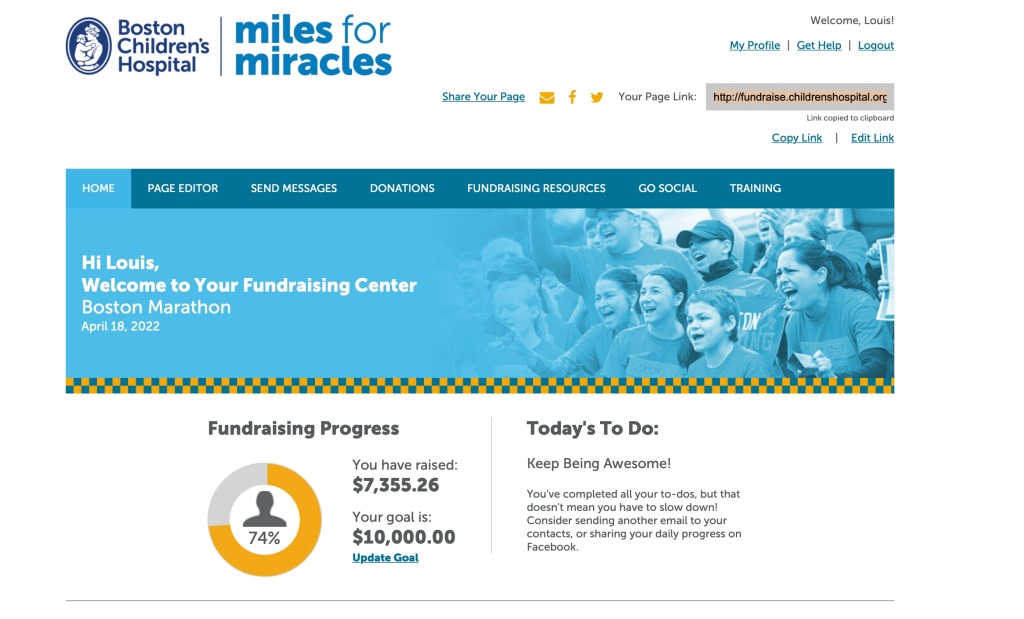
Please CLICK HERE to check the progress of my fundraising or to contribute to my fundraising goal of $10,000 for Boston Children’s Hospital.
Only FIVE MORE MONDAYS before Marathon Monday! Every dollar matters for this great cause! Please help me meet my goal!
This month I’m marking the 101st birthday of Louie, my dad, by publishing legendary recipes that feature two of springtime’s premier delicacies. These Cooking With Love recipes (along with all the others that have been revealed so far) can be found here.
Take a look and let me know what you like best, foraged wild cardoon or homegrown fava beans, the first crop planted in the spring garden?
This is a classic match-up: wild v. domesticated, found v. cultivated, weed v. legume, stringy v. furry (see below). About the only thing they have in common is the Romano cheese that accompanies them both so well on your plate.
I love them both but have to give a slight nod to the cardoon. The burdock plant, often found on the border of fields, is best picked when it is young (but not too young) when the stalk is about the width of your ring finger. In our family, it has a mystique all its own, because of the very miracle of finding it– for FREE!– in the secret locations that were scoped out in advance and discussed only in hushed tones among family.
Cardoon brought us together like nothing else could because it involved all three wings of the family– the hunter/gatherer (my dad), the sous chefs (the kids), and the cook (my mom until she got fed up with the feeding frenzy that ensued, and would let my dad cook ’em with love).
As you’ll see from the recipe, the real time-consuming work isn’t so much finding them and cutting them down, it is in the peeling of the stringy, fibrous plant. And the cooking takes a little longer than you might imagine because if you rush the flour and egg dipping, you end up with “globs of gardooni” — and that’s as bad as it sounds.
So keep in mind, cardoon are a laborious team effort to prepare. In our house, they were treated with the ultimate respect. Meaning they were eaten with our fingers while standing up, still warm from the pan, as they were being cooked, as soon as they hit the serving tray lined with paper towel.
The fava beans have a much different arc to their story. They are planted in the garden in early spring. Here in Pennsylvania (Zone 7), around March 1. Growing up in western New York (Zone 6) a week or two later, definitely by St. Joseph’s Day (March 19). I planted mine last week.
They hold a special place in my heart because, when my daughter Eve was 2 1/2, in the last year we could select a Halloween costume without her input, we dressed her in a fava bean costume for trick or treating. The outfit’s primary feature was a furry vest, like the luxuriously soft inside of the pod. It was a big hit for the handful of people who actually got it. Not to mention, a sensibly warm ensemble for a cold northeast evening of going door-to-door foraging for candy. Eve has largely forgiven us for the transgression (I hope). Since it was before iPhoto, I don’t have the images at my fingertips to insert into the article quite yet.
I hope you enjoy all of Louie’s favorite recipes. My goal is to put up some more seasonal favorites during the year, so please be sure to COMMENT, LIKE, SUBSCRIBE, and SHARE the page to get them all.
And who knows, maybe I’ll find the photos of that fava bean costume!
By now, some of you who have been paying attention know that I am running the Boston Marathon this year. (Before you read on, click here to contribute to my fundraiser for Boston Children’s Hospital. Thank you~)
When I’ve told people, there are basically two responses: “!” and “?” Roughly translated these are “Congratulations!,” to which I politely remind them I haven’t run it yet, and “What made you want to run it?”
I can’t say there is a singular, catch-all reason that I chose to take on the challenge of Boston. Here’s my attempt at explaining, including the bottom line they all add up to.
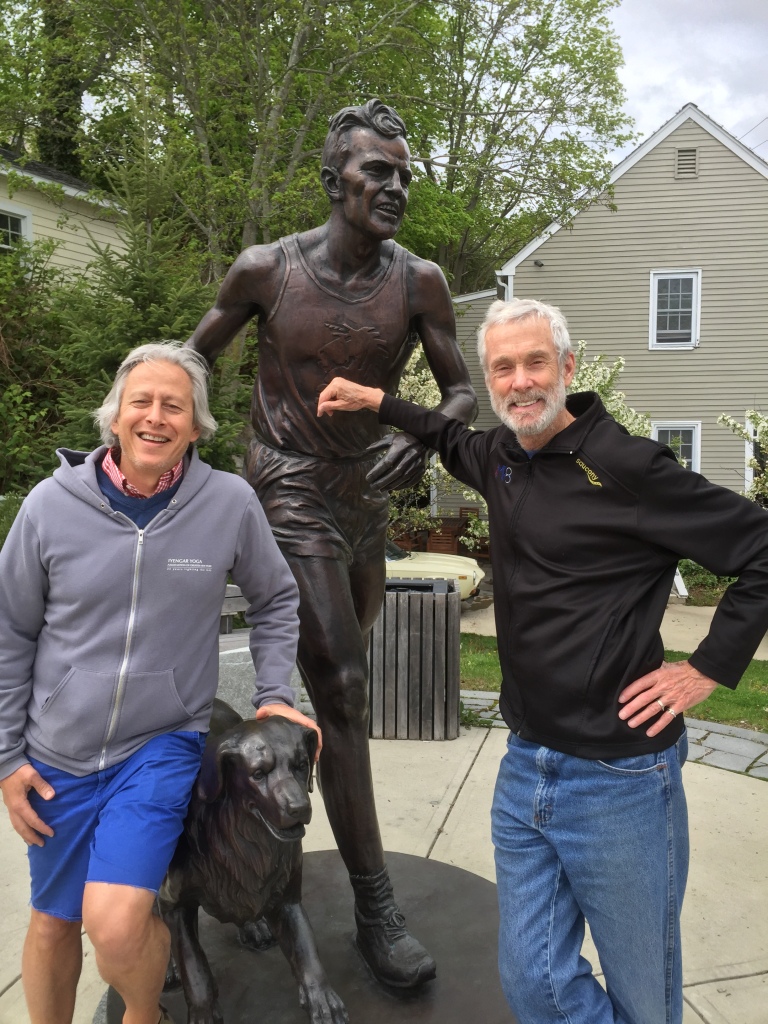
Eligibility – Of the most popular races in the USA, it’s really the only one I could get into, because I’m not a horse (Kentucky Derby), a CART (Indy 500), or an ass (Presidential Race).
The Big Birthday Training Plan My running has followed a very predictable training pattern. While it’s been a constant companion since I first started running in my teens (with the exception of my early 20s, which were spent chasing other pursuits), it only ratchets up once a decade. I ran my first marathon at 30 and my next one (NYC, again) at 40. At age 50, I flipped the script to focus on going faster, at the Fifth Avenue Mile. (You can read about my mulligan mile here). Now, it’s been 10 years since that race, and it felt like it was time to finally take another crack at the marathon. As slow as I’ll be now, I still think it will be better than waiting to see what’s possible if I get to 70.
Friends, Family, and The Famous Boston and New England have particular appeal to me, despite their insufferable sports fans and shady athletic “heroes.” My sister lives in Boston and my daughter works on Cape Cod. One of my running mentors, and one of the few honest and true New England sports heroes, Amby Burfoot (pictured above with me and the statue of John J. Kelley in Mystic, CT) happened to win the 1968 Boston Marathon. According to the campus tour our family once took there, Amby even attended class at Wesleyan University the next day.
I also have several great friends who live in the Boston area, including my University of Rochester grad school buddy Warren Kerper, who’s run more Boston Marathons than I’ve run errands. I finally got to see him and his training buddies from Lexington run in last fall’s race (pictured below, wobbly, the day after the race) and it was the tipping point to convince me that now was the time to do it. Bonus: I can hit him up for free food, lodging, and spurious training theories for the weekend.
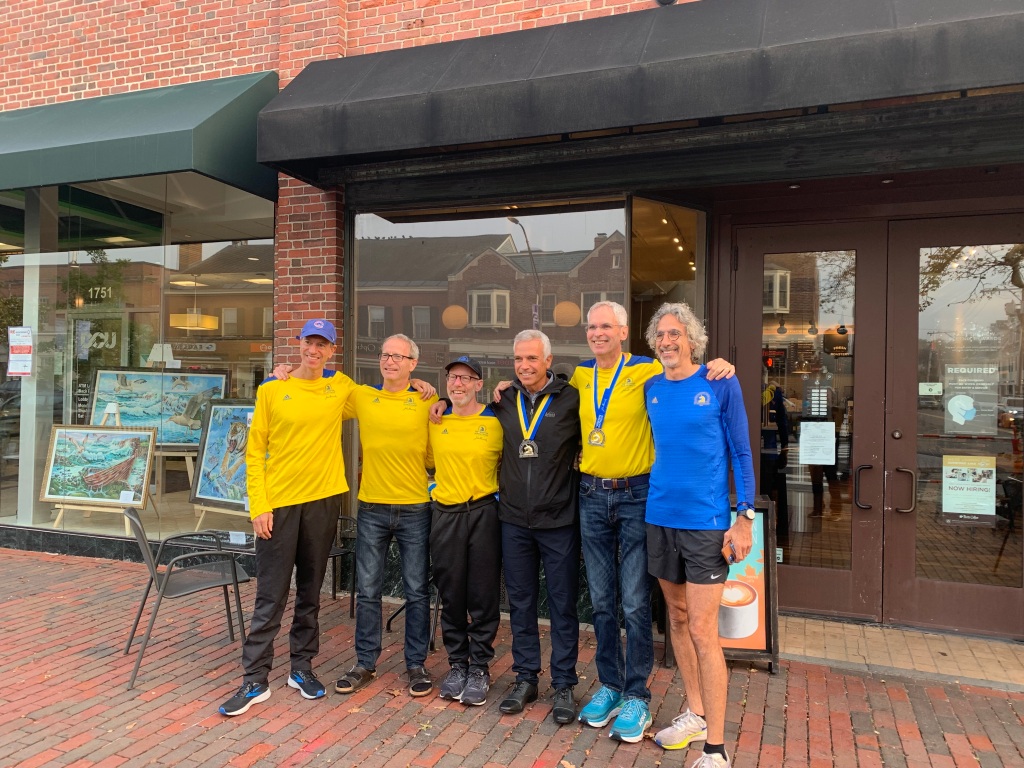
The Great Endeavor – I wrote recently about the concept of the 5 Elements of Adventure, which are also sprinkled in the mix of this attraction to the race at this point in my life.
Wanting to Run More This was kind of weird for me, since I have been content to stay within the bounds of 3-6 mile runs for most of the last 20 years. As the pandemic hit, I found I wanted to occasionally go a little longer– and in the past 6 months, that urge continued to grow and grow. I actually just wanted to run more and longer and longer. To many dedicated distance runners, this may not seem like any big deal, but to me it was a bit of a revelation. Running longer started to feel better. And committing to the longer distances felt more like liberation (from doing other things) than work.
Health I’ve had some health challenges over the past 6 years. (I hope to write more about that someday, but now’s not quite the time yet.) So if all continues to go well in my training, this will be a bit of a celebration of the continued good health and strength that makes this great endeavor possible. We all have a tenuous hold on our well-being, and I’d like to put mine to good use while I am enjoying it.
Boston Children’s Hospital Speaking of health and putting it to good use, my entry into the race is sponsored by the incredible life-protecting, life-restoring group of people at Boston Children’s Hospital. I can’t begin to explain the ways they help families, but I know I’m proud to help raise money for their Miles for Miracles program.
I hope you can join me in contributing to their work for the families most in need by clicking here and making a donation of any size. Every dollar helps– and every person who reaches out gives me more strength to train and run to raise money and awareness for their important work.
Most of all, what I find still propelling me on my long runs is a mantra I started using when I was training for my last marathon, 20 years ago. I only bring it out in the most difficult moments in a long run, when stopping seems like the most reasonable thing to do. The mantra is a litany of all the people that have inspired my running– I’ll share more about the mantra– and my gratitude for everyone, including you for reading this far in this post– over the next 7 weeks.
I hope you stay tuned. There’s a lot to be grateful for.